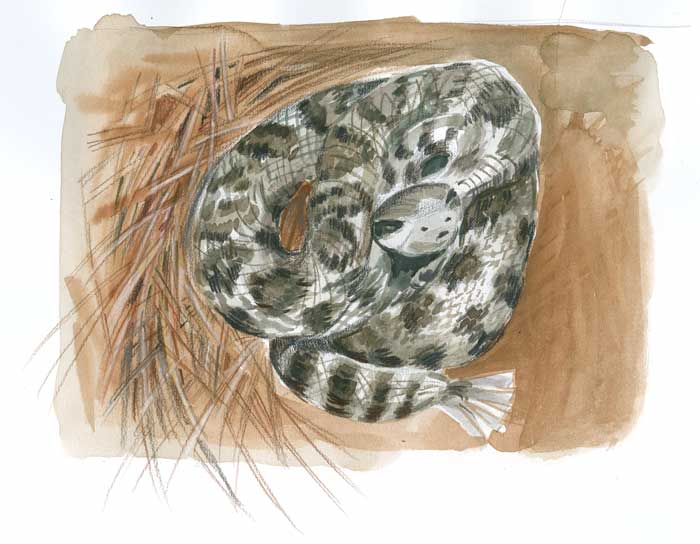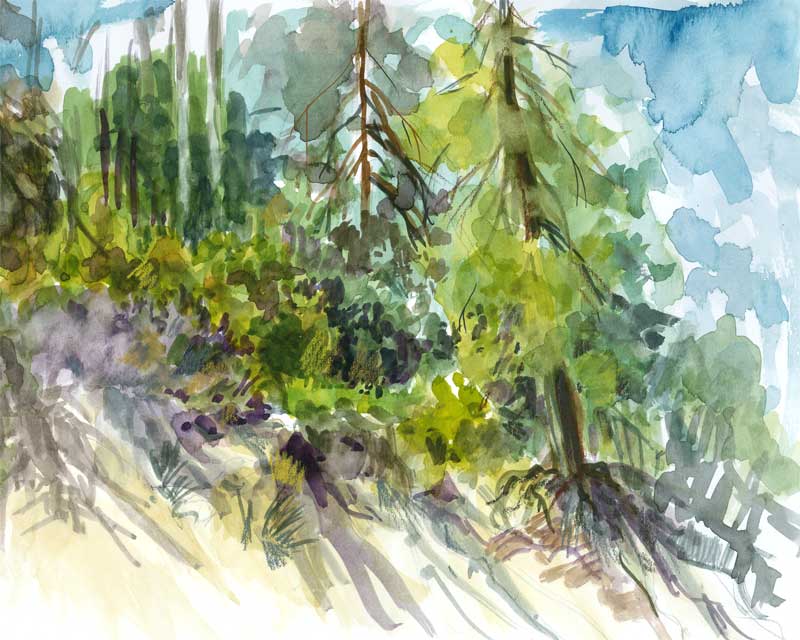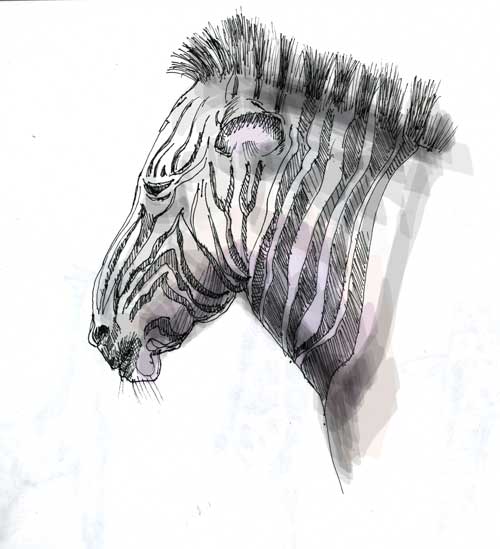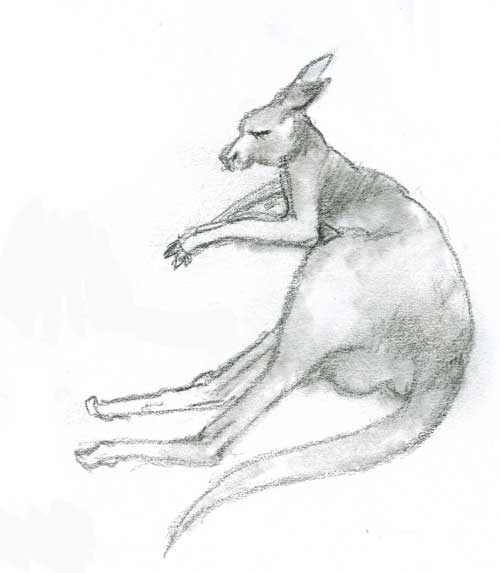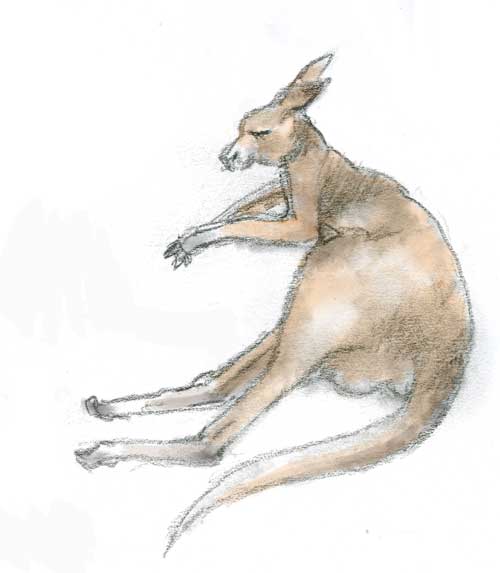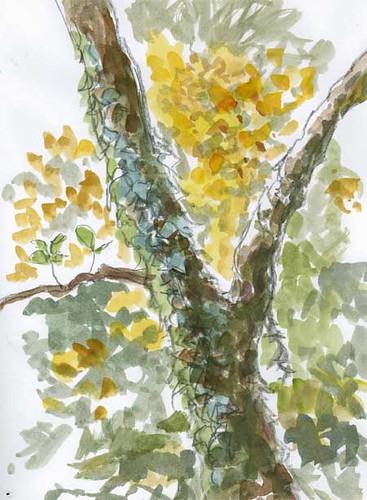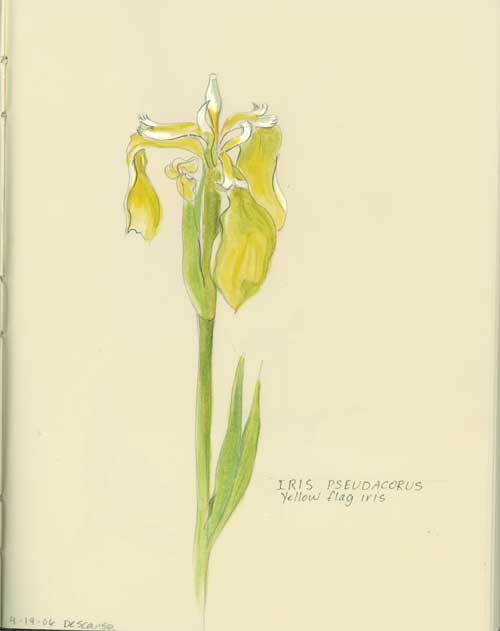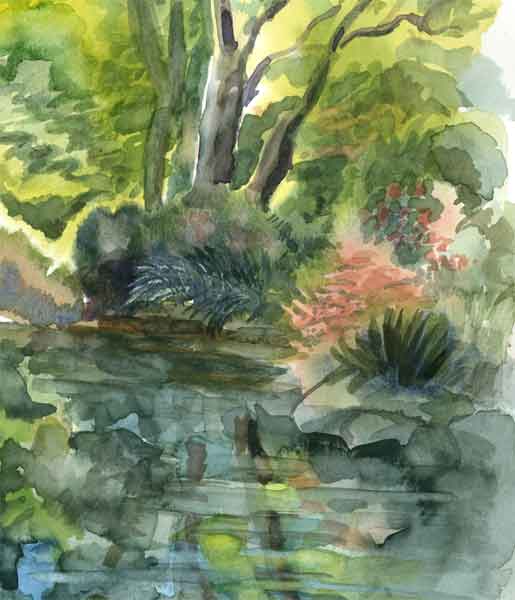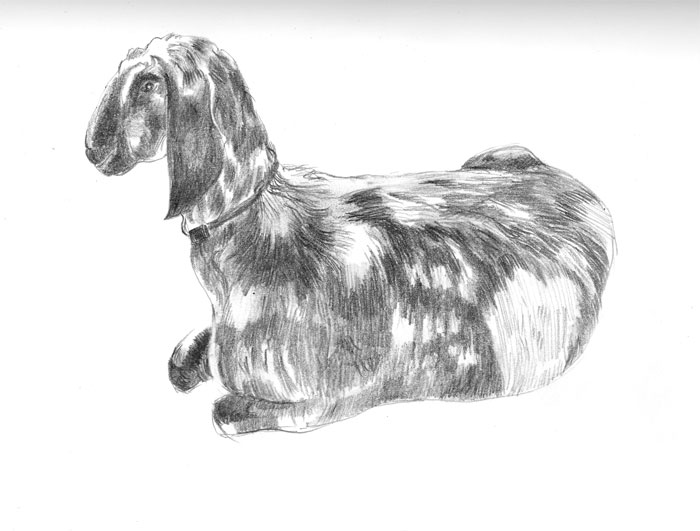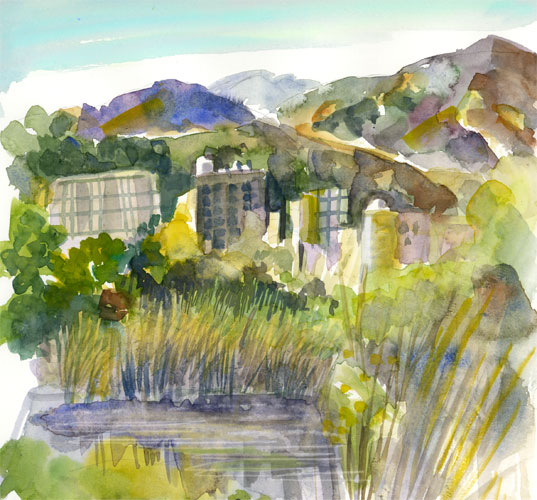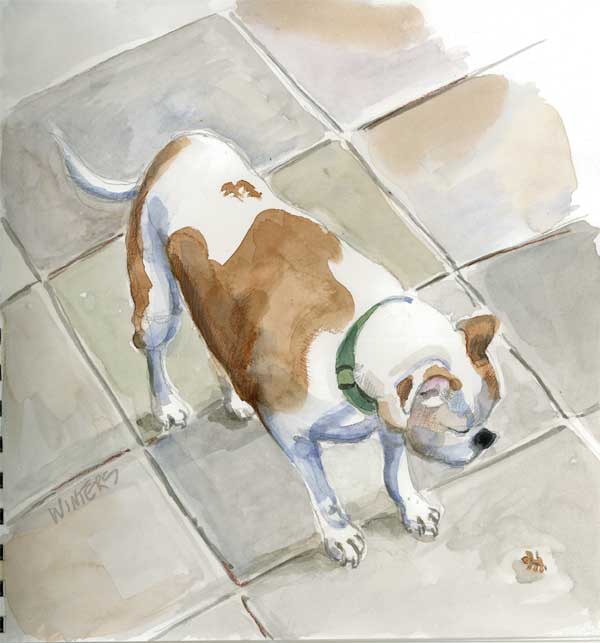You Lookin’ at ME?
Yesterday, after we finished scrambling up and down streambanks and walking over gently sloped hillsides covered with pine straw, my husband and I headed back to the car. He had walked on ahead a few yards and was turned around in my direction when he saw a slithering not far from me. Experienced Boy Scout that he was, he did not yell “look out” or “freeze” or “stand where you are,” he uttered one emphatic word that instantly stopped me in my tracks. “SNAKE.”
I froze and quickly looked around me.
“Where?”
“In front of you and to your left about 7 feet.” Gingerly, I backed up and took the long way back up to the road.
He, of course, the intrepid and curious cameraman, had to investigate.
It was a rattler, and we were the interlopers. We gave the snake space and respect. It had already wound itself up into a neat coil and was ready to defend itself – firstly, by being smaller and inconspicuous, and secondly, if necessary, by striking.
My husband knew, of course, that it could only strike at 2/3 of its length, and it appeared to be about 3 feet in length (he had seen it extended, slithering.)
He offered to take a picture from a safe distance. “Don’t you want to draw it?” he asked.
What a guy! He knew I did.
I nervously hopped on one foot and the other and made frantic little yikesy noises as he approached it to get a better shot for me.
So the snake lived happily ever after and so did my husband, and I have a sketchbook entry to show for it.
From looking at photos on the net, my best guess is that this is a Crotalus oreganus helleri., which looks a lot like your generic diamondback rattler. I read that the western diamondback rattler has now been divided into 7 distinct species, but that taxonomy is disputed. Whatever you want to call it, it is a venomous pit viper, and unlike some other snake species, its babies are born alive and loaded with poison from the get-go.
Rattlers are known to be aggressive. They prey on small rodents, birds and insects, but are themselves vulnerable to birds of prey. Deer, cows and other large mammals will stomp them to death, so they are necessarily fearful of large warm bodies (like ours.)
We couldn’t hear the snake rattling, but the photo showed a blur where a neat tail should be, so I’m guessing that it was quivering slightly.
Did you know that rattlers can SWIM and hold their rattle delicately out of the water when they do? I didn’t know that. I also didn’t know that they often lose their fangs when biting and always have a spare pair in reserve.
I don’t have a fear of snakes, per se, but I do have a healthy respect for them. The sight of one doesn’t send me away screaming and I will gladly hold a small boa or other small non-venomous snake if it is offered. Our son had a green snake named Stretch which I helped care for. So this experience didn’t panic me or discourage me from painting in woods and gullies. But it will certainly teach me to wear hiking boots instead of old sneakers on our next outing.
Tomorrow: a watercolor portrait or a wildflower moment …
Blues in the Woods
Today we drove up into the Angeles Crest National Forest to hear some music at Newcomb’s Ranch Inn … the only restaurant/road house in the vast national forest. Specifically, we drove the 45 minutes or so from our home to hear bluesman Barry “Big B” Brenner. We met Barry several years ago when he played at a restaurant in our town, and since that time we’ve enjoyed his music at sites all over Los Angeles – from a barbecue joint in Monrovia to a cajun restaurant in Toluca Lake to an outdoor concert at a golf course. His rare appearances at Newcomb’s Ranch Inn are worth the drive. Barry has said on numerous occasions that his mission is to introduce people to traditional blues and the blues legends that are the foundation of so much treasured American music. With his 6 string, 12 string and National Resonator guitars, he serves up a rich mixture of delta slides, Piedmont rags and Texas stomps – including numerous original songs. My favorite songs in Barry’s repertoire include “Deep River Blues,” “San Francisco Bay Blues,” and “Step it up and Go,” – but everything he sings is excellent. If you like blues, visit his site at the link above and give a listen … And if you’re in LA, get on his mailing list to find out where he’s appearing.
Barry was taking a set break when we arrived, but when he returned to play, I pulled out my sketchbook and did a painting of some of the pines and chapparal that grow on a hill behind the inn. This time, I didn’t make any attempt at composition, I just painted it like it was … a brilliant cerulean sky with fair weather cumulus, constantly changing light, pine trees clinging to a bare granite cliff, thickets of manzanita and mesquite and clouds of blooming ceanothus. More paintings of spring in our local wilderness will be posted this week.
Blues, sunshine, fresh air, a new watermedia sketchbook recommended by Roz Stendahl, my waterbrush and paints … and my dear husband to take me there and enjoy it with me. I can’t imagine a better start to a 3-day weekend.
Edited to add: I thought you might be interested in seeing what the scene actually looked like. This was a snapshot I took of that hillside. You can barely see the corner of the roof of the building in the foreground. The trees were about 30 yards or so away.
What I found interesting was my perception (above) that I just painted it like it was. I see now that I must have been improvising quite a bit, but I wasn’t really aware that I was.

Zoo Story – Part 1
On our LA Zoo sketchcrawl on Saturday, I took along a bagful of different art supplies because I wanted to experiment drawing the animals using different tools that seemed appropriate for their textures and coloration. I’m going to be scanning them and posting them throughout the week, so please check back if you’re interested in seeing more. The smooth graphic lines of the zebra seemed to lend themself to ink, and our model posed quietly in the shade for quite a long time. Thank you, zebra – you were the most cooperative subject of the day! I scanned and painted it later in Photoshop – my drawing paper doesn’t lend itself to wash.
Next subject: A mother kangaroo who had recently given birth to a little girl “joey.” Following some of the advice given in David Rankin’s Fast Sketching Techniques I used a dark, soft pencil and brought a stomp to smudge the lines. I think this captures some of the feeling of the soft fur of the mother roo who was taking a much needed rest. That big lump under her tail is where her daughter is napping! After scanning the sketch I added a little Photoshop color from a reference photo so you can see the before and after. Rankin is certainly right, drawing with a smudgeable pencil does allow you to get a faster impression with volume – good for drawing animals that won’t hold still.
If you’re in the So. California area (from Santa Barbara to San Diego to San Bernardino) and you’d like the experience of drawing with a group of friendly art-loving people, drop me a note and I’ll put you on our list so you can find out about upcoming get-togethers.
My window view – a not so faraway place
This is my return to the “Draw the view from your window” challenge. My intention is to do it for every season and to notice the differences in foliage and flowers. The tree is a Chinese elm, a hardy and vigorous grower that puts up suckers all over the yard, and promiscuously drops seeds with wild abandon. This elm, in fact, is a child of the four large elms that line the front of our property. Unlike American elms they are not vulnerable to Dutch elm disease. Come to think of it, they’re not vulnerable to anything – even severe trimming and drought. You couldn’t kill them if you tried, which makes them a good plant for drought prone areas like ours.
I painted this in my sketchbook this afternoon, looking out my window onto the end of a sunny day – a welcome change from all the rain and cloudy weather. The colors snapped, the light was good and I just had to stop what I was doing. But here’s my question: If you paint a nature scene from life but you’re not outside, can you call it plein-air? Should I call it faux-air? Or office-air? I am so confused; I will have to ruminate on this for awhile.
Edited to add:
Here’s a fall window view …of the oak just to the left of the Chinese elm (elm not seen here.)
George

I got a late start but decided I would take part in Wet Canvas’ All Media Event. It’s a pretty interesting activity. Reference photos are posted over the weekend and you have a half an hour to select one and two hours to finish your piece (unless you don’t, and then you can post it as a work in progress.) This took me more than an hour, but less than an hour and a half, somewhere in there. I was working quickly – it’s little more than a sketch, really, but it was fun to do. You can execute your piece of work in any medium you want. I need practice in painting people so I picked this one and changed the background and attitude of the head to suit myself.
Yellow flag
A recent entry in my ‘purely botanical’ sketchbook. This yellow flag iris is quite commonly planted around bogs or ponds. This one grows at Descanso gardens near a pond with a weeping willow. This iris, native to Asia and Europe, became known as the French fleur-de-lis, and the word “flag” may refer to a non-English word meaning rush or reed.
In some US states, pseudarcorus is considered a noxious weed because it grows by both underground tubers and reeds and can be invasive. We have a small patch of them in our yard and they have been very well contained in dry years. In very wet seasons they do spread a little bit.
Watercolor in a coptic bound Paperblanks journal with creamy paper
Three Sisters at the pool
Descanso Gardens changes by the season, the day, sometimes by the minute. Especially when the morning sun is weaving and dodging through the dense canopy of oak trees. Yesterday I was so captivated by the morning light that I spent the first hour there shooting photos for reference. In the Japanese garden, one of my favorite areas, the light was changing so rapidly that even ten minutes might highlight a plant that had been in deep shade before. Not even enough time for a wash to dry before it utterly changed. When the light is steady – either full sun or full shade – this is not so much of a problem unless there are moving clouds. Take a look at a time lapse movie and the challenge of changing light will become readily apparent.
I tried cropping this differently, and I think I like it better.
Watercolor in a Canson Montval 7 x 10 watercolor field book
Spotted Nubian – Illo Friday
Click to enlarge
I got busy this week and missed the chance to do something for Illustration Friday. So here’s something done earlier this year that wasn’t used for any previous project …
If you’re a regular reader, you know that I very seldom do any graphite drawing. I don’t have any negative feelings about it. In fact, I love the beautiful halftones that some of my artist friends like Detlef and Felicity so skillfully achieve. For some reason, perhaps negative experiences drawing with a pencil when I was a child, I just don’t gravitate to it. So today, as part of my ongoing animal series I decided to do something radical and to draw this spotted Nubian goat in graphite instead of ink or paint. The paper was not particuarly smooth or fine, much to my regret. I used 2B, 6B and 8B pencils, a kneaded eraser and a tortillon here and there.
(Edited to add: The paper size was 8 1/2 x 11 – for some idea of scale. K.)
In reality the goat is colored burnt sienna, deep burnt umber, black and white. Maybe I’ll try her in watercolor next. After I finish cleaning my refrigerator, that is.
Arroyo Twilight
I think I tend to be a little too conservative with color. It’s a rut I’m trying to get out of by occasionally getting experimental and pushing the colors far beyond realism. So, today my husband and I went out for a little “golden hour” painting time – the last 25 minutes of the day before the sun went behind the nearby Verdugo Hills. There wasn’t time to fiddle and fuss about being neat or getting the shapes and values right – the light was changing rapidly by the minute. I had a very good time splashing around while he read to me about Calder from today’s LA Times.
This watercolor sketch is another view of the same arroyo I painted last week – an area that is either dustbowl dry or full of water depending upon the season. Right now there are cattails in a marshy area – redwinged blackbirds everywhere and ponds full of poliwogs. It’s my idea of a great painting location.
If you draw or paint, in what areas are you ‘pushing yourself’ to be more experimental, regardless of the outcome? Are you taking chances? How does it feel when you do?
Ripley again …
It’s been a few weeks since Ripley has made an appearance here and she was calling that to my attention earlier today. So here you are.
Because I know someone will ask, I will answer it ahead of time – I did not paint this from life. In fact, here’s the secret code to to figuring out whether a particular Rip-painting has been done from life. If Ripley is sleeping or lounging in a mostly horizontal position, there’s a good chance it was done from life. If she appears to be standing up, bouncing around, digging, begging, panting or wearing a plumed hat and pearls, there’s a good chance it was painted from a photo. I do sketch her from life a lot, but mostly when the switch is set to ZZZZZZZZZZZ.
